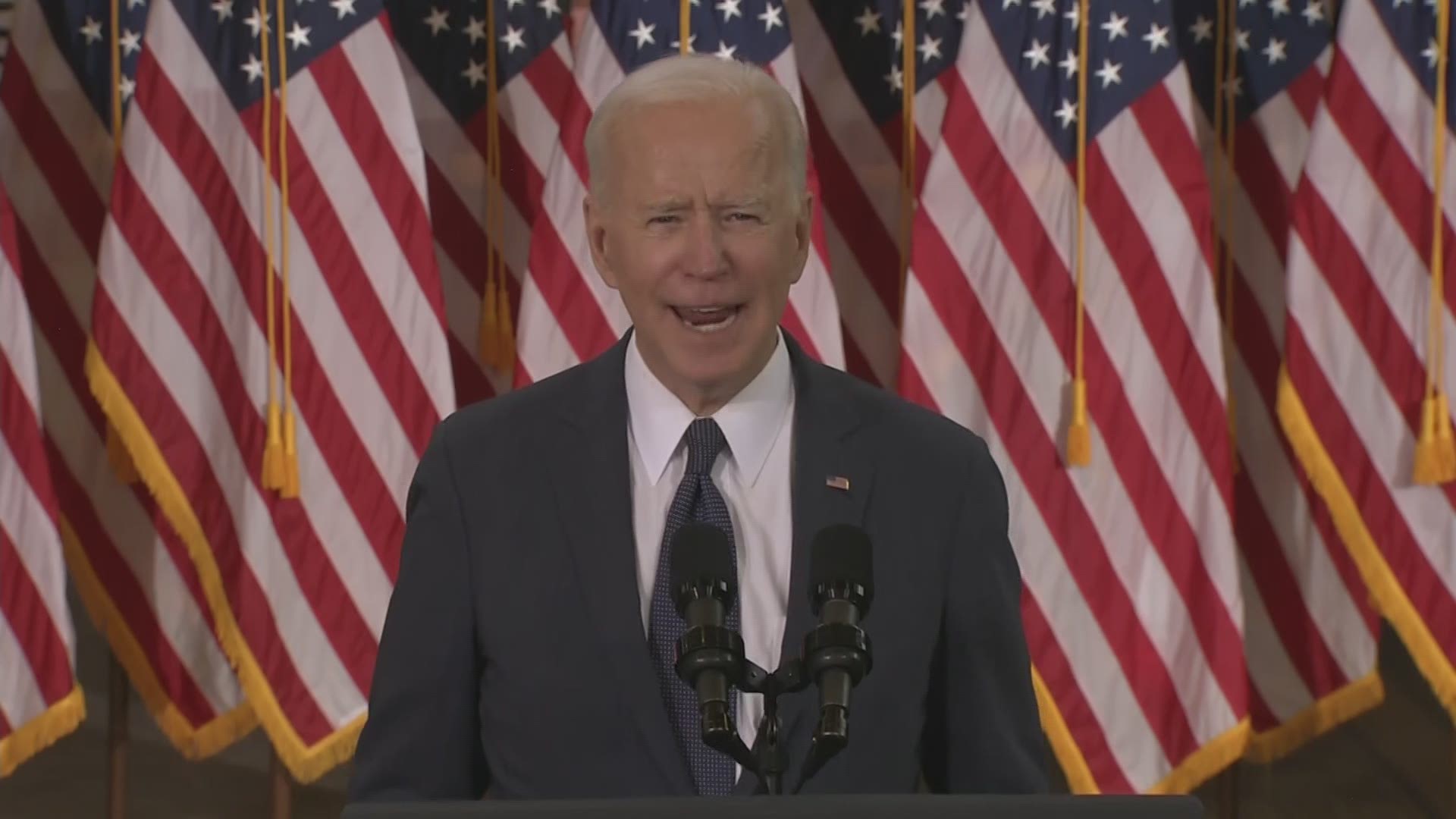CLEVELAND — The Biden White House is amplifying the push for its $2.3 trillion infrastructure package with the release of state-by-state breakdowns that show the dire shape of roads, bridges, the power grid and housing affordability.
The Biden administration pointed to Ohio's infrastructure receiving a C- grade on its Infrastructure Report Card. The highest grade went to Utah, which notched a C-plus. The lowest grade, D-minus, went to the territory of Puerto Rico.
President Joe Biden met Monday afternoon with Republican and Democratic lawmakers and was expected to use the state summaries to show that his plan would help meet the needs of their constituents.
For Ohio, the Biden administration points to 1,377 bridges and over 4,925 miles of highway in poor condition. They calculate that since 2011, commute times have increased by 5.7% in Ohio and on average, each driver pays $506 per year in costs due to driving on roads in need of repair. The American Jobs Plan would devote more than $600 billion for transportation infrastructure, including $115 billion repairing roads and bridges.
Biden's plan will also mean more money to improve public transportation, drinking water, affordable housing, home energy and clean energy jobs.
There will also be a push to increase broadband internet access to Ohioans, of which 6.2% have no access and 58% only have access to one provider. 14% of Ohio households do not have an internet subscription.
There would also be an investment in caregiving and child care. The American Jobs Plan claims it will make an investment in helping more Ohioans access care. It would also add money to help with building new child care centers and making improvements to existing centers.
Biden's plan would invest more money in retooling and revitalizing manufacturers. The plan estimates 703,000 Ohioans are employed by manufacturers, roughly 13% of the state's workforce.
Ohio is also home to more than 700,000 veterans and about half of them (49 percent) are over the age of 65. President Biden's plan would invest in improving the infrastructure of VA health care facilities.
You can read the American Jobs Plan Ohio breakdown report below:
Breakdown of proposed funding (nationally):
- Roads and bridges: $115 billion
- Public transportation: $85 billion
- Resilient infrastructure: $50 billion
- Drinking water: $111 billion
- Housing: $200 billion
- Broadband internet: $100 billion
- Caregiving: $400 billion
- Child care: (Amount not specified)
- Manufacturing: $300 billion
- Home energy: (Amount not specified)
- Clean energy jobs: (Amount not specified)
- Veterans health: $18 billion
It is not clear what percentage or amounts of the above funding Ohio would actually receive.
The administration is banking that its data will confirm the everyday experiences of Americans as they bump over potholes, get trapped in traffic jams and wait for buses that almost never correspond to published schedules. There is already a receptive audience to the sales pitch, and the strategy is that public support can overcome any congressional misgivings.
"We don't have a lot of work to do to persuade the American people that U.S. infrastructure needs major improvement," Transportation Secretary Pete Buttigieg said on Fox News Channel's "Fox News Sunday" ahead of the report's release. "The American people already know it."
Republican lawmakers have been quick to reject the infrastructure proposal from Biden. They say just a fraction of the spending goes to traditional infrastructure, as $400 billion would expand Medicaid support for caregivers and substantial portions would fund electric vehicle charging stations and address the racial injustice of highways that were built in ways that destroyed Black neighborhoods.
Republican lawmakers also object to funding the package by increasing the corporate tax rate from 21% to 28% and increasing the global minimum tax, among other tax changes including stepped-up IRS enforcement being proposed by the Biden administration.
More headlines:
Editor's Note: The below story aired on April 9, 2021

